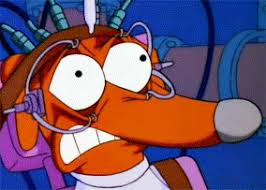
A year ago, Justin Fuente was a hot name. Virginia Tech fans were terrified he might be lured away to a bigger job, and much like the halcyon days of the Frank Beamer era, it felt like, if things simply kept progressing on schedule, the biggest of goals were within reach.
And then the Hokies went 6-7, lost their bowl game, and watched a half-dozen players transfer after the season.
Suddenly, Fuente’s star isn’t shining so brightly.
But is the criticism of Fuente fair?
First, let’s be clear about Fuente’s strengths. He’s a QB developer and an offensive guy. When he arrived, it was to inject life into a listless Hokies offense and to, essentially, let Bud Foster keep doing his thing on D. That’s not to suggest Fuente has no hand in the defense or that he holds no responsibility for how Foster’s crew performs, but the point is, when you have a DC of Foster’s caliber, that’s not the area the head coach needs to focus the bulk of his attention on.
So, how has Fuente done at rejuvenating Virginia Tech’s offense? Answer: A whole lot better than most people seem to realize.

Virginia Tech was quite good in Year 1 when Fuente had a handful of veteran holdovers from the Beamer era. Year 2 was a concerning step back that still resulted in nine wins. Year 3? The year that’s earned all the criticism?
Across the board, the Hokies’ offense rebounded, nearly matching 2016’s numbers. Overall, Virginia Tech’s offense actually mustered more yards-per-play (5.87) than any season since 2010, was dramatically better on designed run plays (up 16 percent from 2017) and nearly matched its 2016 offensive S&P+ mark. The Hokies did all this despite an injury forcing a QB change in September.
(Of note: Nearly all the dip in VT’s yards/pass rates were a result of a shorter passing game designed for Ryan Willis after Josh Jackson’s injury.)
Now, there’s a fair argument to be made, perhaps, that having the 41st-ranked offense in S&P+ isn’t quite the progress Hokies fans should’ve expected from the offensive guru in his third year, but keep in mind where things where when he arrived. In Beamer’s last three seasons, the Hokies ranked 57th, 86th and 77th.
The real concerns, of course, were on D.
The numbers:

From ninth to 77th in defensive S&P+. More than doubling points/drive allowed. A 55 percent uptick in yards/designed run — a margin made up entirely due to a woeful 3.2 yards/rush allowed after first contact. Everything was out of character for a Bud Foster defense.
So what’s your bet: Youth reared its ugly head too often last year in a perfect storm type of season, where injuries and NFL departures left the defense incredibly thin? Or Bud Foster forgot how to coach and won’t be able to fix Virginia Tech’s D for 2019?
Of course, that leads us back to personnel. Jackson is gone. So are three of the better options in the passing game – Sean Savoy, Chris Cunningham and Eric Kumah. That’s got to hurt the offense and it sure seems like an indictment of the culture in Blacksburg, right?
Again, not necessarily.
Jackson had clearly been surpassed by Willis (and there were more than a few folks around the program that felt like Willis should’ve been the starter from Day 1 last year). Willis had a fine season, and figures to be better prepped for the job now. Jackson had 9 TDs and 7 turnovers in his last six games vs. Power 5 opponents in a VT uniform. And, of course, Quincy Patterson could be the QB of the future.
Kumah never had a 100 yard game.
Savoy had 2 or fewer catches in 13 of his 21 games.
After catching four TDs as a freshman in 2016, Cunningham had just three more in the next two seasons combined.
Despite an encouraging finish to 2017, DeShawn McClease saw his role diminish in 2018 and averaged less than 2 yards per rush five times in 11 games.
Not every breakup has a villain, and in each case, it seems like Virginia Tech and the player had better options than the status quo. And on defense, where the real problems existed, Foster returns his entire starting LB corps and secondary.
Again, none of this is to suggest there isn’t reason for concern. Even Fuente has said there needs to be a boatload of improvement from last year to 2019. But the “sky is falling” narrative doesn’t quite fit either. You’d hope after Year 3, there was more of a foundation and less ongoing transition, but that can be chalked up to circumstance as much as failures on the coaching staff. Beamer took seven years to get things rolling, so Fuente’s still well ahead of schedule, right?
Sure, 2019 will tell us a lot. It may well define Fuente’s future at Virginia Tech. But there’s no reason to assume that has to be a bad thing.
